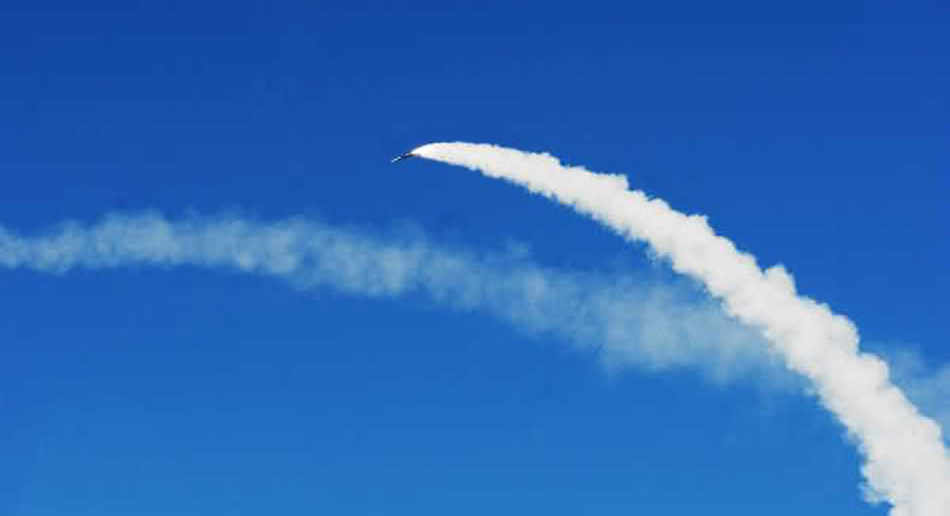London, UK – 29 August 2012
By Sania Farooqui
China’s People’s Liberation Army (PLA) forces staged a live-fire test of what appears to be a new fully functioning high altitude surface-to-air missile (SAM) somewhere in the Tibetan plateau on 20 July in a move intended to prepare for potential US strikes against Chinese interests in the region. The test, as was reported by the PLA Daily, was conducted under the authority of the Lanzhou Military Area command (MAC).
Geographic details of the exact launch site were not mentioned. The Tibetan plateau comprises the southern component of the People’s Liberation Army’s (PLA) Lanzhou command and borders India and Nepal to the south. Additionally, the larger Lanzhou command borders Pakistan, Kyrgyzstan and Kazakhstan to the west and Russia to the North.
While geographically close to hotly contested border areas shared with India, experts say the controversial test was both politically and strategically demonstrative – in short, a message intended to counter increasing US presence in Asia.“SAMs are anti-missile or anti-aircraft weapons, hence are inherently defensive,” said Major General Anukul Chandra, who managed the Indian Army’s equipment upgrades and modifications until 2008. “They are to be positioned relative to threat perception.
Tibet provides a defensive arc around mainland China towards southwest. If you analyse immediate threats from this direction, the greater one is from present and future US bases in that direction rather than India,” Chandra told DefenceReport.
Chandra said the reported live fire test, which PLA spokesmen say included at least three separate launches, also aimed to define the operational limits of several missile variants in the unique atmospheric conditions produced by a launch at high altitude – 5,000 metres (16,400 feet) – according to the PLA. Jonathan Holslag, Head of Research at the Brussels Institute of Contemporary China Studies, said the images released by Chinese media showed two specific variants: the medium range S-300PMU (SA-17) and HQ-16 (SA-10). Official Chinese sources add that the HQ-16 is designed to prosecute targets at low altitudes – a capability, they admit, that will help it counter low flying subsonic US Tomahawk cruise missiles.
While the decision to launch from Tibet was likely made out of safety considerations as well as to gather high altitude performance data, Chandra said the location would have been chosen deliberately for future use as a permanent IADS (Integrated Air Defence System) node. “They have built good infrastructure in Tibet for movement and deployment of huge forces and have also established army and air bases there. Yes, the launch pads are dual purpose: R&D and operational,” Chandra said.
China’s fears over US influence in Asia
Defence equipment and defence funding disparities between India and China also highlight China’s concern over escalating US involvement in the region. Chinese military spending in 2012, according to a government statement, is planned to increase by 11.2 percent to USD 106.4 billion (GBP 67 billion) from USD 95.6 billion (GBP 60.3 billion) in 2011. In comparison, India aims to boost its military spending by 17 percent to USD 40 billion (GBP 25 billion) in order to keep pace with China, according to a parliamentary statement. While India seeks to narrow the gap, China reads into that disparity a justifiable rationale for closer military cooperation between the US, India and other regional powers.
According to Martin McCauley, an International Affairs analyst from the University of London, China fears that the US will become more closely, though subtly, aligned with India in order to alter the strategic balance in India’s favour. India’s economy, he says, “does not have the resources to compete directly with China. So they have to concentrate on nuclear weapons. The US will help them modernise.”
Harsh Pant of King’s College London’s Department of Defence Studies agrees that both China and India are pursuing an extensive programme of military modernisation, while also building external alliances. “The most important relationship that India is cultivating is with the US while also forging ties with China’s neighbours in East and Southeast Asia.” “While China has larger ambitions such as challenging the US for global supremacy, Indian foreign and defence policy is increasingly geared towards managing China’s rise,” Pant said.
When considering the geographical positioning of both countries, argues Jonathan Holslag, “India has only two fronts: Pakistan and China. China has about a dozen fronts and faces a lot of threats that are much more imminent than India.” “While the Indian strategic elite are obsessed with China, India remains only a secondary security issue for China,” Hoslag added. The Brussels-based analyst stressed that China is transitioning “from defence to active defence.
China is aiming at fourfold deterrence: by nuclear means, with conventional weapons, in cyber, and, even though it officially sticks to the no militarisation-of-space policy, in space.” China will be Asia’s most advanced military power by 2020, Hoslag said. This, however, excludes the potential strategic role to be played by the US in the region.
Calculating the impact of arms imports in Asia
While that cooperative relationship continues to take shape, both countries rely on large indigenous arms industries. But these have severe limitations. It is for this reason that India has been aggressively expanding its cooperation with other foreign defence industries, Richard Bitzinger of Nanyang Technological University told DefenceReport. “It is cooperating with the Russians on the BrahMos cruise missiles, and more recently on a fifth generation fighter jet.
India has also worked, rather secretly, with the Israelis on missile defences and AWACS (Airborne Warning and Control System),” said Bitzinger, who heads the University’s Military Transformations Programme. “Israel is probably India’s second-largest source of foreign technology.” In comparison, the past five years have seen a slowdown in Chinese cooperation with outsiders as Russian technological exports decline.
While on the one hand fearing isolation from the west, Chandra says, the Asian powerhouse appears to be escalating its external threat assessments. “The west should not think that China is developing its arsenal for India.”


